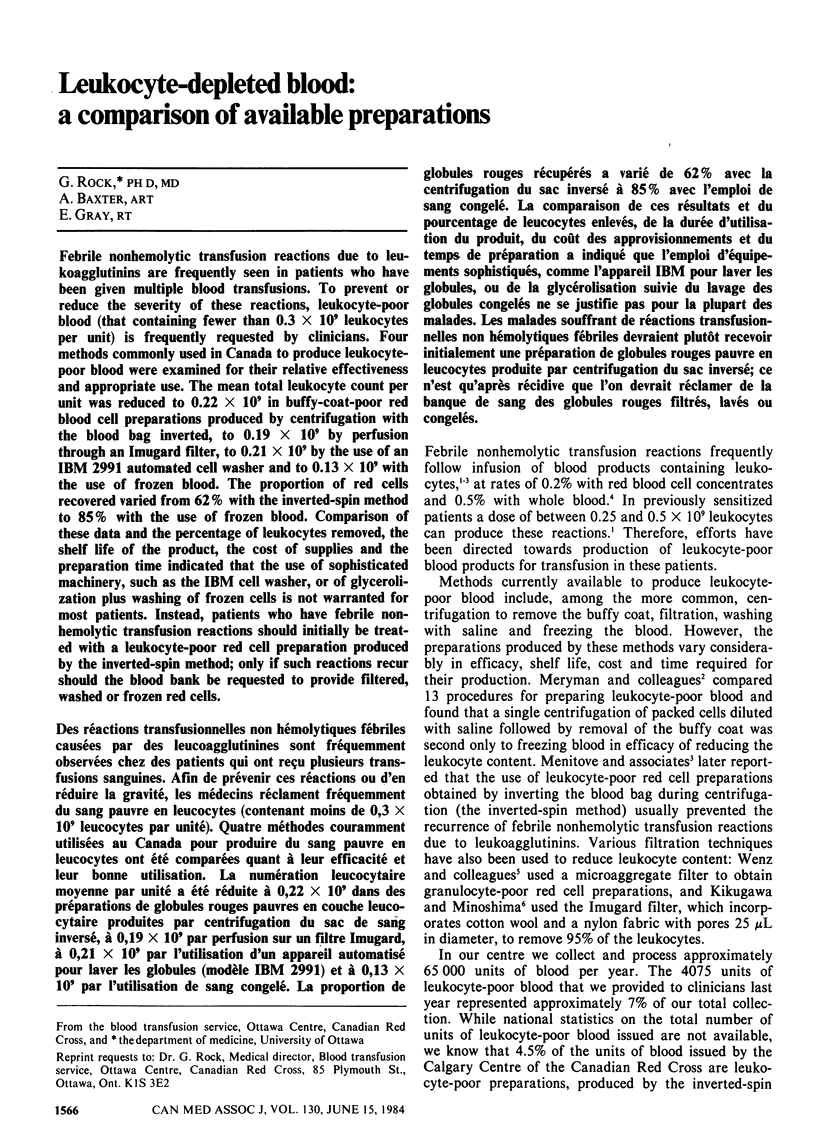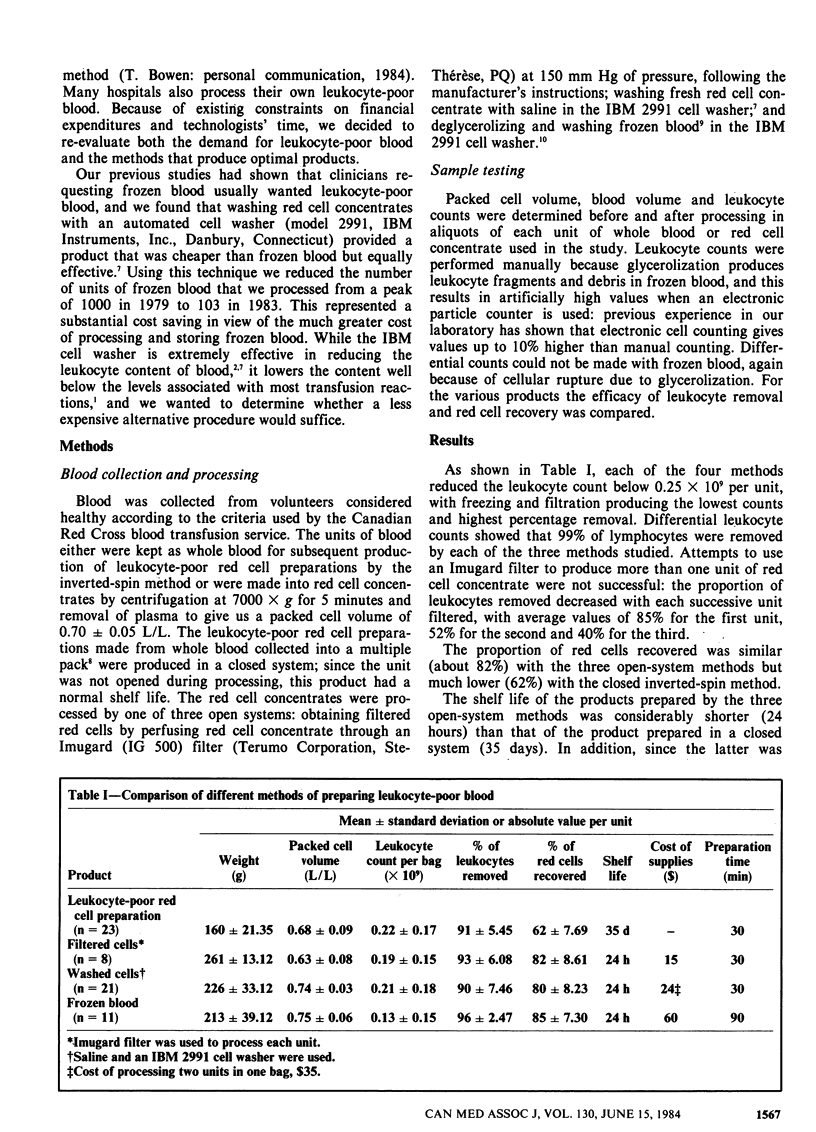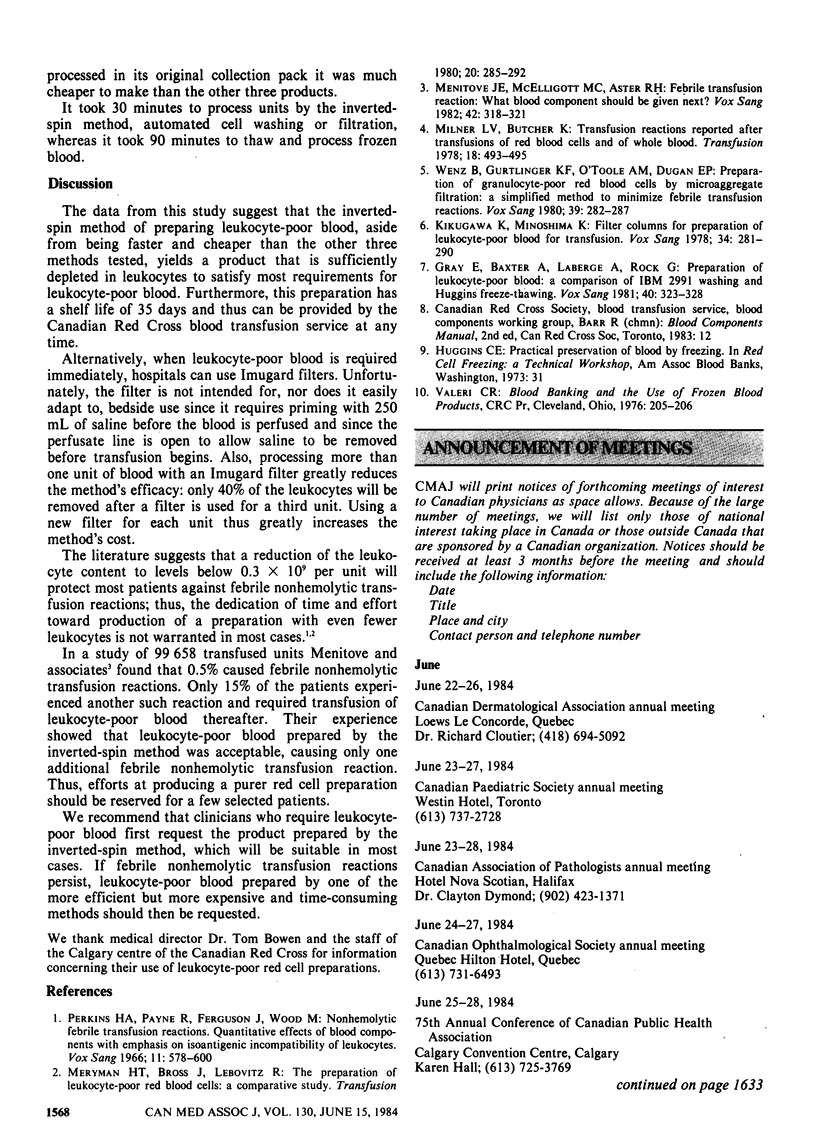Abstract
Febrile nonhemolytic transfusion reactions due to leukoagglutinins are frequently seen in patients who have been given multiple blood transfusions. To prevent or reduce the severity of these reactions, leukocyte-poor blood (that containing fewer than 0.3 X 10(9) leukocytes per unit) is frequently requested by clinicians. Four methods commonly used in Canada to produce leukocyte-poor blood were examined for their relative effectiveness and appropriate use. The mean total leukocyte count per unit was reduced to 0.22 X 10(9) in buffy-coat-poor red blood cell preparations produced by centrifugation with the blood bag inverted, to 0.19 X 10(9) by perfusion through an Imugard filter, to 0.21 X 10(9) by the use of an IBM 2991 automated cell washer and to 0.13 X 10(9) with the use of frozen blood. The proportion of red cells recovered varied from 62% with the inverted-spin method to 85% with the use of frozen blood. Comparison of these data and the percentage of leukocytes removed, the shelf life of the product, the cost of supplies and the preparation time indicated that the use of sophisticated machinery, such as the IBM cell washer, or of glycerolization plus washing of frozen cells is not warranted for most patients. Instead, patients who have febrile nonhemolytic transfusion reactions should initially be treated with a leukocyte-poor red cell preparation produced by the inverted-spin method; only if such reactions recur should the blood bank be requested to provide filtered, washed or frozen red cells.
Full text
PDF


Selected References
These references are in PubMed. This may not be the complete list of references from this article.
- Gray E., Baxter A., Laberge A., Rock G. Preparation of leukocyte-poor blood: a comparison of IBM 2991 washing and Huggins freeze-thawing. Vox Sang. 1981 May;40(5):323–328. doi: 10.1111/j.1423-0410.1981.tb00716.x. [DOI] [PubMed] [Google Scholar]
- Kikugawa K., Minoshima K. Filter columns for preparation of leukocyte-poor blood for transfusion. Vox Sang. 1978;34(5):281–290. doi: 10.1111/j.1423-0410.1978.tb02483.x. [DOI] [PubMed] [Google Scholar]
- Menitove J. E., McElligott M. C., Aster R. H. Febrile transfusion reaction: what blood component should be given next? Vox Sang. 1982;42(6):318–321. doi: 10.1111/j.1423-0410.1982.tb01106.x. [DOI] [PubMed] [Google Scholar]
- Meryman H. T., Bross J., Lebovitz R. The preparation of leukocyte-poor red blood cells: a comparative study. Transfusion. 1980 May-Jun;20(3):285–292. doi: 10.1046/j.1537-2995.1980.20380214893.x. [DOI] [PubMed] [Google Scholar]
- Milner L. V., Butcher K. Transfusion reactions reported after transfusions of red blood cells and of whole blood. Transfusion. 1978 Jul-Aug;18(4):493–495. doi: 10.1046/j.1537-2995.1978.18478251249.x. [DOI] [PubMed] [Google Scholar]
- Perkins H. A., Payne R., Ferguson J., Wood M. Nonhemolytic febrile transfusion reactions. Quantitative effects of blood components with emphasis on isoantigenic incompatibility of leukocytes. Vox Sang. 1966 Sep-Oct;11(5):578–600. doi: 10.1111/j.1423-0410.1966.tb04256.x. [DOI] [PubMed] [Google Scholar]
- Wenz B., Gurtlinger K. F., O'Toole A. M., Dugan E. P. Preparation of granulocyte-poor red blood cells by microaggregate filtration: a simplified method to minimize febrile transfusion reactions. Vox Sang. 1980 Nov;39(5):282–287. doi: 10.1111/j.1423-0410.1980.tb01872.x. [DOI] [PubMed] [Google Scholar]


